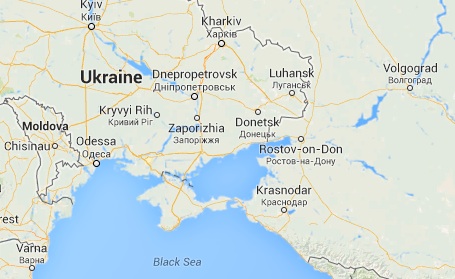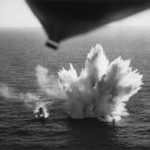Soldiers massed along a border, threatening an invasion to protect their ethnic brothers from harm. A referendum in which citizens decided to become part of a larger, more powerful neighboring country. A once-proud nation, moving boldly to regain its influence over a region of Eastern Europe.
These developments could be taken from today’s headlines involving the Russian invasion of Ukraine, but they also are echoes from nearly a century ago, when the principal actor was not the Russian bear, but the German eagle.
Adolf Hitler came to power in Germany in 1933, promising to unite all German-speaking peoples and to re-establish the Fatherland’s influence in Eastern Europe. Hitler wanted to undo what he saw as the humiliating Treaty of Versailles, signed at the end of World War I. In 1935, he began expanding Germany’s armed forces in direct contravention of the treaty.
As time went by and his military grew stronger, the German chancellor began pressing for unification of Austria and Germany, the so-called “Anschluss.” (Such a union was forbidden by the Treaty of Versailles.) The pressure built to such a point that Austria’s chancellor called for a referendum to put the matter to a vote of the people. That vote never took place because a coup by the Austrian Nazi Party toppled the government in March, 1938, transferred power to Germany, and invited the German army into the country to enforce the new arrangement. In April, the Nazis held a plebiscite that asked Austrians to ratify the reality on the ground. According to the Nazis, the final vote was 99.8 percent in favor of the union.
That same year, Hitler set his sights on Czechoslovakia, specifically the Sudetenland region that shared a border with Germany. The Nazis encouraged the German-speaking majority in the Sudetenland to demand autonomy. When the Czechoslovak government’s accommodations didn’t go far enough, ethnic Germans fomented clashes with the local police. Hitler mobilized his army on the German border in preparation for an invasion he said was necessary to protect ethnic Germans from being attacked. A last-minute peace effort by the leaders of England, France and Italy resulted in a meeting with Hitler in Munich on Sept. 29, a meeting to which Czechoslovakia’s leader was not invited. The result was the Munich Agreement, which essentially forced Czechoslovakia to hand the Sudetenland over to Germany. Great Britain’s Prime Minister Neville Chamberlain famously called the agreement “peace for our time,” but within a year Czechoslovakia had ceased to exist, with much of the country falling under German control.
Emboldened by his successes, Hitler sent his army into Poland on Sept. 1, 1939. Two days later to the Fuhrer’s surprise, Great Britain and France declared war on Germany and World War II was underway. That first day of the war was largely uneventful, except for the tragic attack by a German U-boat on a British passenger ship, the story told by my book, Without Warning.
All of this is not to say that events in Ukraine and the Crimean Peninsula are about to lead to another world conflict. But the parallels are interesting: the resurgence of Russia, the massed troops on Ukraine’s boarder, and the vote in Crimea. And these parallels are not lost on the Western-leaning leaders of Ukraine, who are not above hinting ominously that Vladimir Putin’s ambitions may not be satisfied by annexing a relatively small territory.
Today the world is far more integrated economically, politically, and socially than was the case in 1939. A conflict among the world’s major powers would be extremely costly and in no regime’s best interests. The danger, of course, stems from the confrontational posture that can lead to a miscalculation or a single rash action that triggers a cascade of unwanted events.
That attack by a German U-boat on Sunday evening, Sept. 3, 1939, might have been just such an event, but for the fact that war had been declared eight hours earlier. It was a mistake by a young, overeager naval officer. His orders forbade him to attack a lone merchant ship without first identifying the ship’s cargo and giving warning of his attack, two things he failed to do. His heedless act killed 112 people aboard the passenger ship Athenia. It was exactly the type of ship that Hitler did not want his navy to attack at the beginning of the war for fear that it might turn neutral countries against Germany.
But the larger lesson to take from the attack on Athenia is that such mistakes occur despite all efforts and orders to the contrary. That is the real danger of the situation inside and along Ukraine’s borders today.



